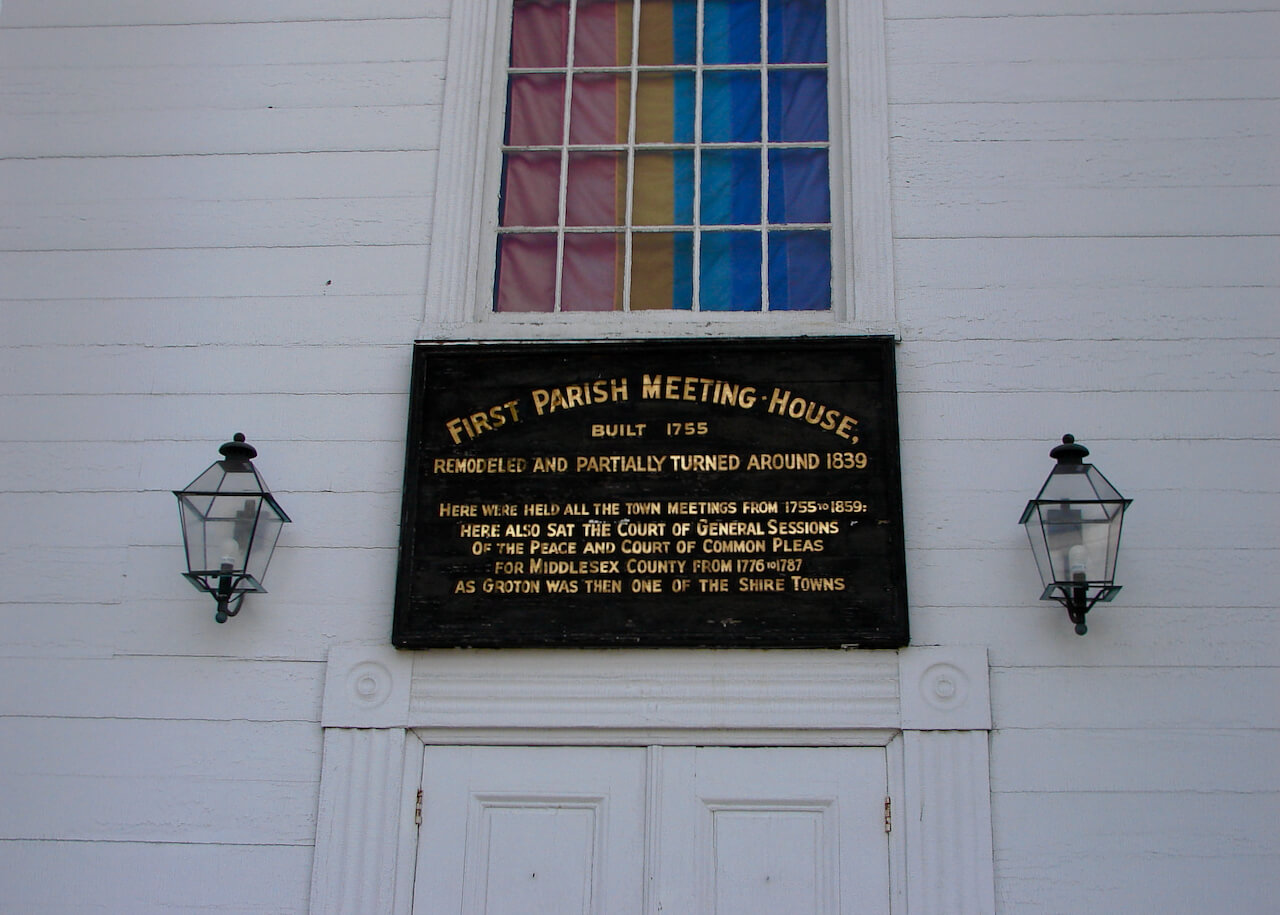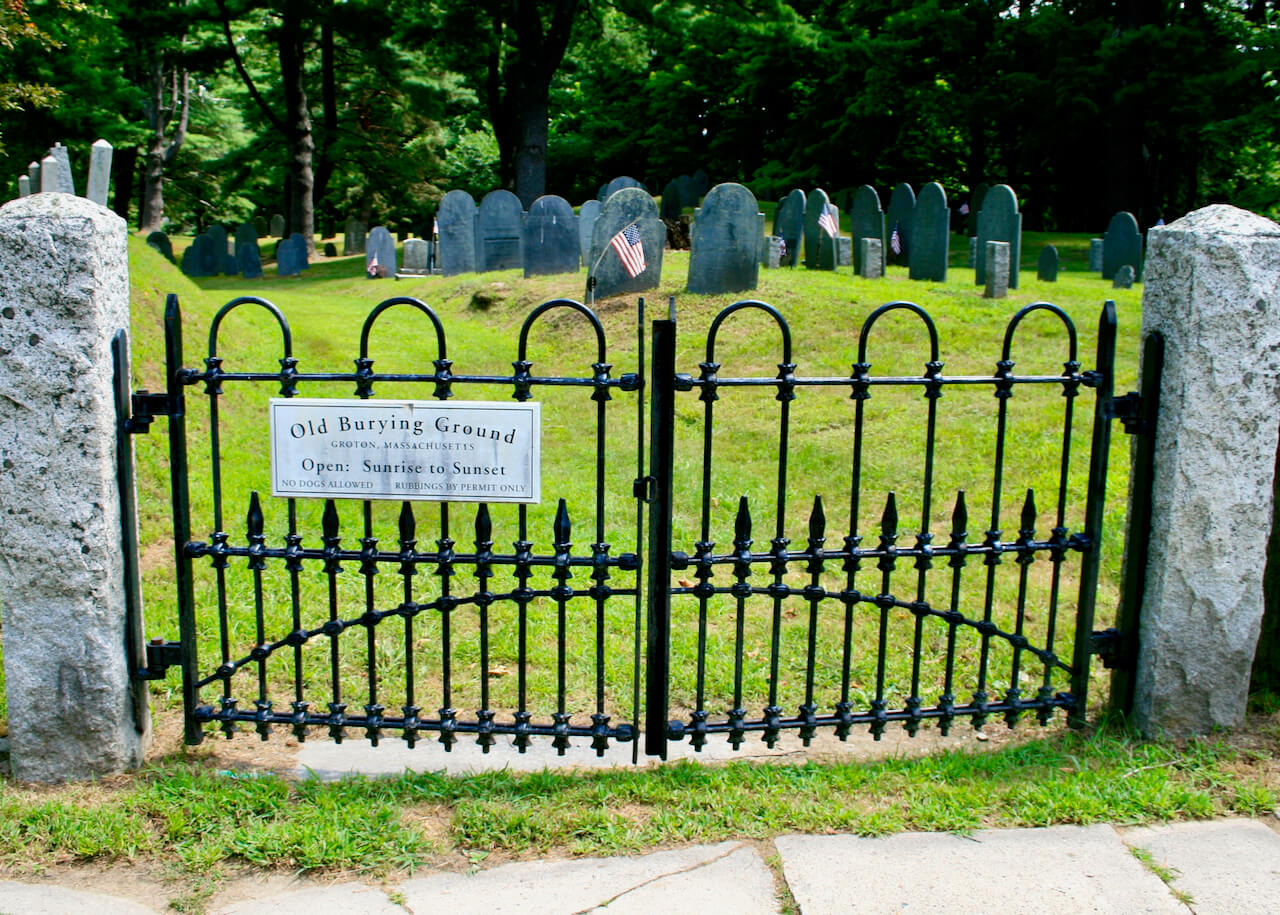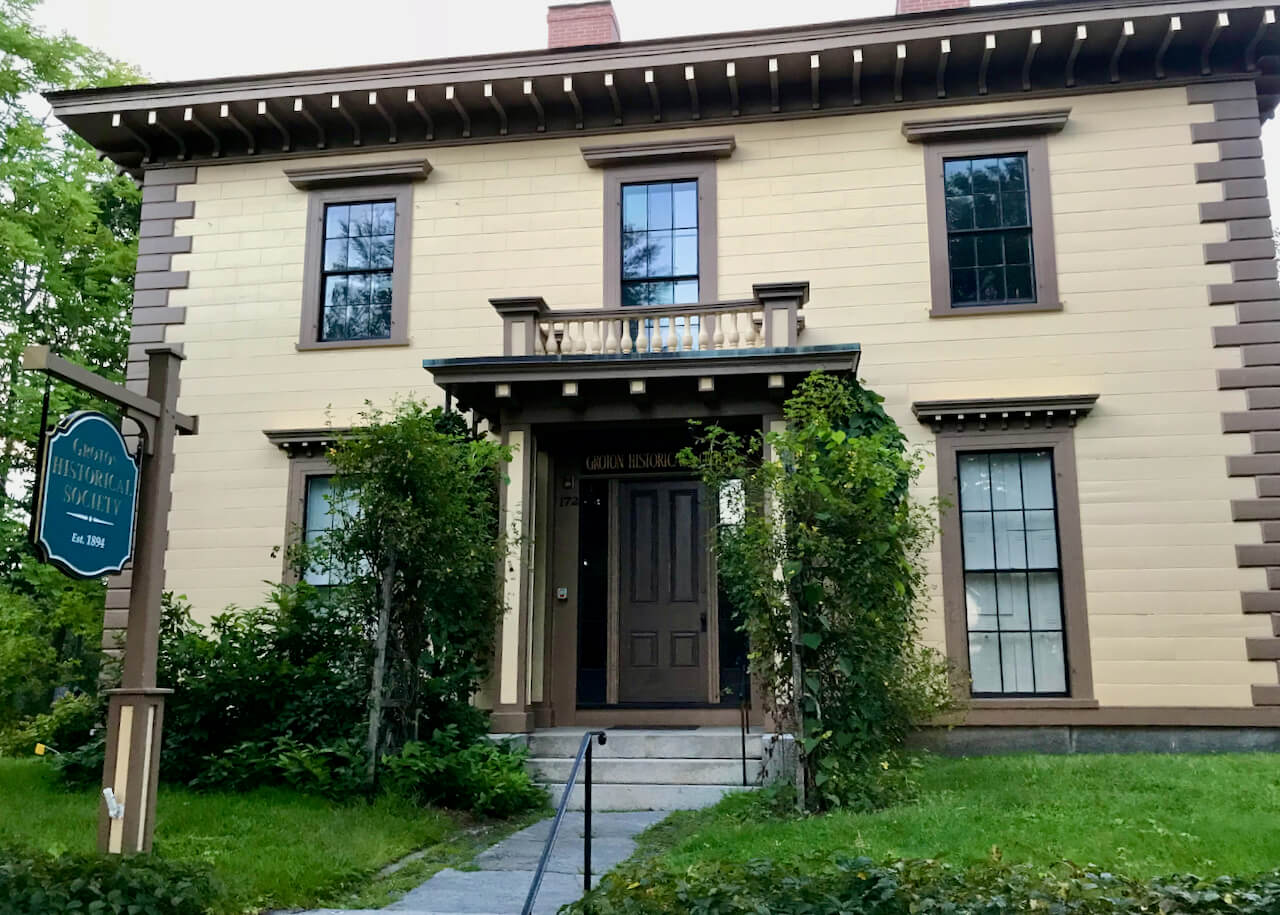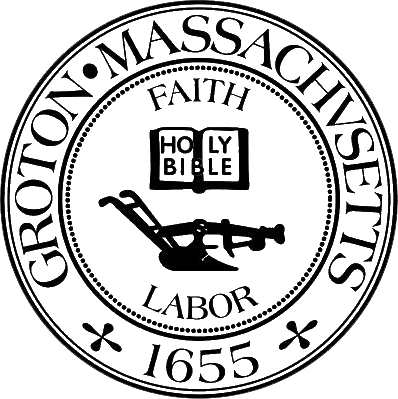Situated at the confluence of the Nashua and Squannacook Rivers, the Nashaway called the area that is now Groton Petapawag, meaning “swampy river.” Here, for thousands of years the Algonquian-speaking Nipmuc and Nashaway lived.
European settlement began when John Tinker followed Indian trails from the Bay area and established a trading post near the mouth of Nod Brook on the Nashua River. In 1655, the town was incorporated as The Plantation of Groton, named after Groton in Suffolk, England.
Raided, and nearly destroyed, in 1676 during King Philip’s War, Groton was eventually resettled, and its population grew, supported by industries including a soapstone quarry, large hop-growing industry, brick factory, sawmill, grist mill, and pewter mill which produced tea pots, plates, cups, and buttons.
Today Groton retains it rural character with more than thirty percent of its land designated as publicly accessible protected open space including over one hundred miles of trails.





